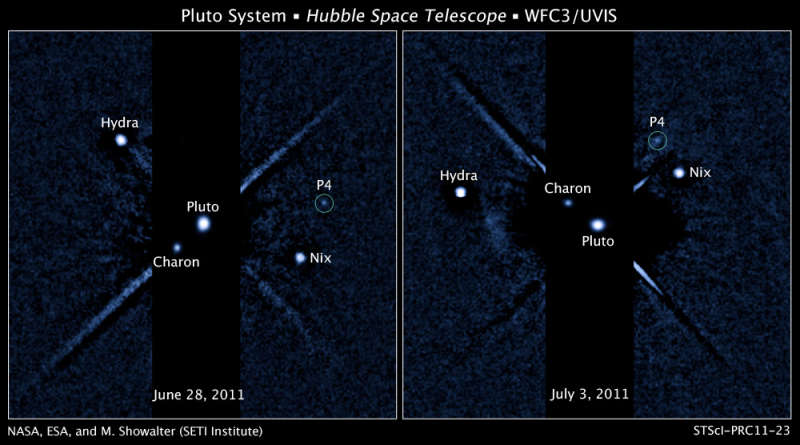Explanation: Nix and Hydra were first introduced to human eyes in Hubble Space Telescope images from May 2005, as Pluto's second and third known moons. Now Hubble images have revealed a fourth satellite for the icy, dwarf planet. Provisionally designated P4, it completes an orbit of Pluto in about 31 days. Presently Pluto's smallest and dimmest known moon, P4 is estimated to be 13 to 34 kilometers across. The newly discovered satellite was first spotted in Hubble observations from June 28, and later confirmed in a follow-up on July 3 and July 18. These two panels are composites of both the short and long exposures that include brighter Pluto itself along with Pluto's largest moon Charon. Camera noise and image artifacts also show up in the long exposure segments. The Hubble observations were made while searching for faint rings around the distant world in support of NASA's New Horizons mission, set to fly by the Pluto system in 2015.
1999 2000 2001 2002 2003 2004 2005 2006 2007 2008 2009 2010 2011 2012 2013 2014 2015 2016 2017 2018 2019 2020 2021 2022 2023 2024 2025 |
Январь Февраль Март Апрель Май Июнь Июль Август Сентябрь Октябрь Ноябрь Декабрь |
NASA Web Site Statements, Warnings, and Disclaimers
NASA Official: Jay Norris. Specific rights apply.
A service of: LHEA at NASA / GSFC
& Michigan Tech. U.
|
Публикации с ключевыми словами:
Pluto - Pluto moons - Charon - Hydra - Плутон - Харон - спутники планет
Публикации со словами: Pluto - Pluto moons - Charon - Hydra - Плутон - Харон - спутники планет | |
См. также:
Все публикации на ту же тему >> | |
